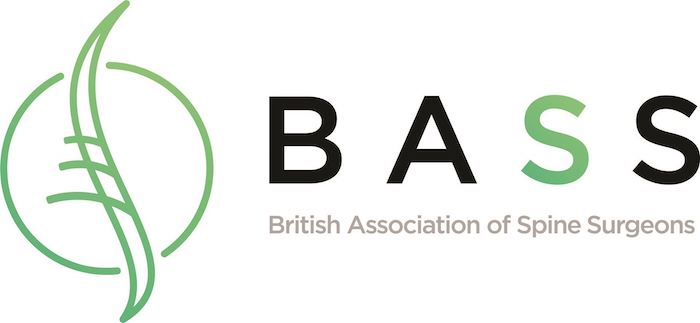Conditions treated: back pain
Introduction
Having suffered from back pain for many years (I had to sell my cherished Lotus Elise S1 because of it) I completely understand what many of my patients are going through. I also understand what it is like to live with back pain to varying degrees on a daily basis, and what to realistically expect from treatment for back pain.
Without wanting to be a killjoy, the first thing to say is that back pain is extremely difficult to treat and currently there is no surgically proven long term cure for back pain. Unlike other parts of the body, we cannot do back replacement surgery nor back transplant surgery. Despite this, there are many things I can do which can make your life more comfortable and your back pain more manageable.
Before treating your back pain it is important for me to try to identify what the cause of your back pain is. By asking questions and in some cases examining you, I can get a better picture of your back pain and how it is affecting your life. An MRI scan will give me an idea as to which parts of your back are affected.
Common causes of back pain
Musculo-ligamentous
The most common cause of back pain is musculo-ligamentous, which means that the muscles and ligaments are torn, inflamed or strained. In these situations most cases of back pain will get better by itself without the need for any intervention, although seeing a physiotherapist, chiropractor or osteopath may help.
The only time I would advise being careful would be if the MRI scan showed evidence of a central disc herniation or a tear of the disc. In these situations it is important to avoid bending, lifting and twisting for about 6 weeks to ensure that you do not push any disc material out and end up with leg pain or worse - as I did!
In March 2019, I failed to take my own advice and ended up pushing out such a big disc herniation that my right leg was paralysed for 3 days and I was left with a foot drop for 2 years. I decided not to have surgery and was treated with 3 spinal injections. I am now back in the gym regularly and practising karate.
Disc herniation
So as you have probably guessed, a disc herniation, disc bulge, slipped disc, disc prolapse (they are all pretty much the same thing) or a tear of the wall of the disc (an annular tear) can cause back pain without leg pain. In these situations it is thought the disc bulge starts an inflammatory process, which causes the back pain and the back goes into spasm to stop it being moved, thereby reducing the chance of more damage.
In these situations the options are to ride it out, keep moving or seek specialist advice. Most episodes of acute back pain will improve without any form of intervention within 2 to 3 weeks. The evidence for spinal injections is mixed with about a 50% success rate, so it is important to be realistic about the outcome. Obviously if you are in the 50% who improve then it will feel as if it was worth doing.
For more information on disc herniation please click this link.
Spondylolisthesis/spondyloysis
I have explained elsewhere on my website what a spondylolisthesis is. As mentioned the commonest cause of a spondylolisthesis is degeneration, and in these cases the facet joint has to change as one vertebra slides forward on the other. As the facet joint deforms it becomes arthritic.
It is important to realise that when I say arthritic it is not necessarily describing an age-related condition. When any joint becomes arthritic the first thing to happen is the joint space gets narrower. Next the cartilage lining the bone thins until finally there is no joint space, no cartilage and the two sides of the bone in the joint rub against one another. This is what we mean when we say there is bone on bone contact. Understandably this can be painful and cause back pain at any point in the arthritic process.
Spondylolysis is a stress fracture of the spine and can cause a spondylolisthesis and back pain. These conditions can initially be treated by back strengthening and core stability exercises, but may need a spinal injection to calm the inflammatory process down, which is often the cause of an acute flare up.
In both of these situations either a nerve root block or facet joint injection/medial branch block may help to reduce the inflammation and break the pain cycle, allowing you to do your back strengthening and core stability exercise and/or pilates and yoga exercises successfully.
Ultimately if the facet joint injection/medial branch wears off (remember, it is mainly a diagnostic procedure to check that the facet joint and medial branch is the cause of your pain) then there is a good chance that radiofrequency ablation or Denervex rotatory capsular debridement may give you longer lasting relief.
Degenerative scoliosis
I have already written a small amount about degenerative scoliosis on my website but the main thing to understand is that if I tell you that you that the cause of your back pain is because you have a degenerative scoliosis, it means that the curve in your spine is causing the facet joints to load abnormally which in turn, causes them to become inflamed.
In these situations there is no surgical cure for the back pain, but it can be helped by diagnostic facet joint/medial branch block injections followed by radiofrequency ablation or Denervex rotatory capsular debridement.
Facet joint arthritis
Facet joint arthritis for whatever cause is often a cause of debilitating back pain. The facet joint is the joint at the back of the spinal canal, which is how the bones of the spine (vertebral bodies) link up. The spine links up at the front through the disc and at the back through the facet joints either side of the spinal canal, in which the nerves sit.
The facet joint has a capsule, which holds it together and is supplied by a small nerve root known as the medial branch. When a facet joint becomes arthritic due to loss of joint space and a reduction in the cartilage, it becomes a cause of back pain.
When the facet joint moves abnormally due to the arthritis, it causes the capsule to stretch which in turn becomes inflamed resulting in more back pain. This pain travels in the medial branch and hence the term “medial branch block” is used when this little nerve is blocked. This leads to a reduction in pain as the pain signal can no longer travel within the nerve, and is no longer recognised or noted by the brain.
A facet joint injection aims to place an anti-inflammatory steroid into the facet joint, but it is important to recognise that the facet joint is extremely small and often closed down so trying to put a steroid into the joint can be difficult. In these situations, the capsule of the facet joint is often inflamed so it is important to ensure that when performing a facet joint injection and medial branch block, the steroid is also administered to the capsule to ensure a complete block of the facet joint, the medial branch and the facet joint capsule.
It is important to remember that facet joint injections and medial branch blocks are not necessarily designed to last very long. They are performed mainly as a diagnostic procedure in order to identify whether the facet joint and the capsule are the cause of the patient’s back pain before being able to move on to other treatments. On occasions the facet joint injection and medial branch block can last a reasonable length of time, but this is rare.
It is known that the steroid will stay in the body for up to 6 weeks, and in my experience a facet joint injection will be thought to be a success if the patient gets a period of time where they are completely pain free. This may last one week, two weeks or longer - however, as already mentioned facet joint injections are diagnostic rather than therapeutic as they do not change the fact that there is still arthritis in the joint, which will almost certainly lead to recurrent inflammation of both the joint and the capsule.
If the facet joint injection and medial branch block gives the patient a period of significant pain relief but the pain returns, then it is reasonable to assume that a longer lasting block of the medial branch would make the period of pain relief last longer, and so this would be discussed as the next step. This could be done using either radiofrequency ablation of the medial branch down a needle, or if needed minimally invasive Denervex rotatory capsular debridement performed through 1cm incisions.
Severe causes of back pain
Fortunately severe causes of back pain are rare. We talk about red flags related to back pain and these are mainly if the back pain is severe and unremitting, which means it never goes away whatever you do. In these cases an MRI will very quickly rule out a serious cause such as cancer, which can either originate from the bone itself or the bone marrow or more likely spread to the back from another “primary” cancer elsewhere in the body.
It is important to seek specialist medical advice particularly if you have back pain with recent unexplained weight loss, or have severe back pain and have had a previous cancer.



